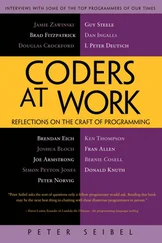Peter Siebel - Practical Common Lisp
Здесь есть возможность читать онлайн «Peter Siebel - Practical Common Lisp» весь текст электронной книги совершенно бесплатно (целиком полную версию без сокращений). В некоторых случаях можно слушать аудио, скачать через торрент в формате fb2 и присутствует краткое содержание. Год выпуска: 2005, ISBN: 2005, Издательство: Apress, Жанр: Программирование, на английском языке. Описание произведения, (предисловие) а так же отзывы посетителей доступны на портале библиотеки ЛибКат.
- Название:Practical Common Lisp
- Автор:
- Издательство:Apress
- Жанр:
- Год:2005
- ISBN:1-59059-239-5
- Рейтинг книги:4 / 5. Голосов: 1
-
Избранное:Добавить в избранное
- Отзывы:
-
Ваша оценка:
- 80
- 1
- 2
- 3
- 4
- 5
Practical Common Lisp: краткое содержание, описание и аннотация
Предлагаем к чтению аннотацию, описание, краткое содержание или предисловие (зависит от того, что написал сам автор книги «Practical Common Lisp»). Если вы не нашли необходимую информацию о книге — напишите в комментариях, мы постараемся отыскать её.
Practical Common Lisp — читать онлайн бесплатно полную книгу (весь текст) целиком
Ниже представлен текст книги, разбитый по страницам. Система сохранения места последней прочитанной страницы, позволяет с удобством читать онлайн бесплатно книгу «Practical Common Lisp», без необходимости каждый раз заново искать на чём Вы остановились. Поставьте закладку, и сможете в любой момент перейти на страницу, на которой закончили чтение.
Интервал:
Закладка:
169
This is slightly broken in the sense that if PROBE-FILE signals an error for some other reason, this code will interpret it incorrectly. Unfortunately, the CLISP documentation doesn't specify what errors might be signaled by PROBE-FILE and probe-directory, and experimentation seems to show that they signal simple-file-errors in most erroneous situations.
170
The language now generally considered the first object-oriented language, Simula, was invented in the early 1960s, only a few years after McCarthy's first Lisp. However, object orientation didn't really take off until the 1980s when the first widely available version of Smalltalk was released, followed by the release of C++ a few years later. Smalltalk took quite a bit of inspiration from Lisp and combined it with ideas from Simula to produce a dynamic object-oriented language, while C++ combined Simula with C, another fairly static language, to yield a static object-oriented language. This early split has led to much confusion in the definition of object orientation. Folks who come from the C++ tradition tend to consider certain aspects of C++, such as strict data encapsulation, to be key characteristics of object orientation. Folks from the Smalltalk tradition, however, consider many features of C++ to be just that, features of C++, and not core to object orientation. Indeed, Alan Kay, the inventor of Smalltalk, is reported to have said, "I invented the term object oriented , and I can tell you that C++ wasn't what I had in mind."
171
There are those who reject the notion that Common Lisp is in fact object oriented at all. In particular, folks who consider strict data encapsulation a key characteristic of object orientation—usually advocates of relatively static languages such as C++, Eiffel, or Java—don't consider Common Lisp to be properly object oriented. Of course, by that definition, Smalltalk, arguably one of the original and purest object-oriented languages, isn't object oriented either. On the other hand, folks who consider message passing to be the key to object orientation will also not be happy with the claim that Common Lisp is object oriented since Common Lisp's generic function orientation provides degrees of freedom not offered by pure message passing.
172
Prototype-based languages are the other style of object-oriented language. In these languages, JavaScript being perhaps the most famous example, objects are created by cloning a prototypical object. The clone can then be modified and used as a prototype for other objects.
173
T the constant value and T the class have no particular relationship except they happen to have the same name. T the value is a direct instance of the class SYMBOL and only indirectly an instance of T the class.
174
Here, as elsewhere, object means any Lisp datum—Common Lisp doesn't distinguish, as some languages do, between objects and "primitive" data types; all data in Common Lisp are objects, and every object is an instance of a class.
175
Technically you could skip the DEFGENERIC altogether—if you define a method with DEFMETHOD and no such generic function has been defined, one is automatically created. But it's good form to define generic functions explicitly, if only because it gives you a good place to document the intended behavior.
176
A method can "accept" &key and &rest arguments defined in its generic function by having a &rest parameter, by having the same &key parameters, or by specifying &allow-other-keys along with &key . A method can also specify &key parameters not found in the generic function's parameter list—when the generic function is called, any &key parameter specified by the generic function or any applicable method will be accepted.
177
CALL-NEXT-METHOD is roughly analogous to invoking a method on superin Java or using an explicitly class-qualified method or function name in Python or C++.
178
While building the effective method sounds time-consuming, quite a bit of the effort in developing fast Common Lisp implementations has gone into making it efficient. One strategy is to cache the effective method so future calls with the same argument types will be able to proceed directly.
179
Actually, the order in which specializers are compared is customizable via the DEFGENERIC option :argument-precedence-order, though that option is rarely used.
180
In languages without multimethods, you must write dispatching code yourself to implement behavior that depends on the class of more than one object. The purpose of the popular Visitor design pattern is to structure a series of singly dispatched method calls so as to provide multiple dispatch. However, it requires one set of classes to know about the other. The Visitor pattern also quickly bogs down in a combinatorial explosion of dispatching methods if it's used to dispatch on more than two objects.
181
Defining new methods for an existing class may seem strange to folks used to statically typed languages such as C++ and Java in which all the methods of a class must be defined as part of the class definition. But programmers with experience in dynamically typed object-oriented languages such as Smalltalk and Objective C will find nothing strange about adding new behaviors to existing classes.
182
In other object-oriented languages, slots might be called fields , member variables , or attributes .
183
As when naming functions and variables, it's not quite true that you can use any symbol as a class name—you can't use names defined by the language standard. You'll see in Chapter 21 how to avoid such name conflicts.
184
The argument to MAKE-INSTANCE can actually be either the name of the class or a class object returned by the function CLASS-OF or FIND-CLASS .
185
Another way to affect the values of slots is with the :default-initargsoption to DEFCLASS . This option is used to specify forms that will be evaluated to provide arguments for specific initialization parameters that aren't given a value in a particular call to MAKE-INSTANCE . You don't need to worry about :default-initargsfor now.
186
Adding an :aftermethod to INITIALIZE-INSTANCE is the Common Lisp analog to defining a constructor in Java or C++ or an __init__method in Python.
187
One mistake you might make until you get used to using auxiliary methods is to define a method on INITIALIZE-INSTANCE but without the :afterqualifier. If you do that, you'll get a new primary method that shadows the default one. You can remove the unwanted primary method using the functions REMOVE-METHOD and FIND-METHOD . Certain development environments may provide a graphical user interface to do the same thing.
Интервал:
Закладка:
Похожие книги на «Practical Common Lisp»
Представляем Вашему вниманию похожие книги на «Practical Common Lisp» списком для выбора. Мы отобрали схожую по названию и смыслу литературу в надежде предоставить читателям больше вариантов отыскать новые, интересные, ещё непрочитанные произведения.
Обсуждение, отзывы о книге «Practical Common Lisp» и просто собственные мнения читателей. Оставьте ваши комментарии, напишите, что Вы думаете о произведении, его смысле или главных героях. Укажите что конкретно понравилось, а что нет, и почему Вы так считаете.








